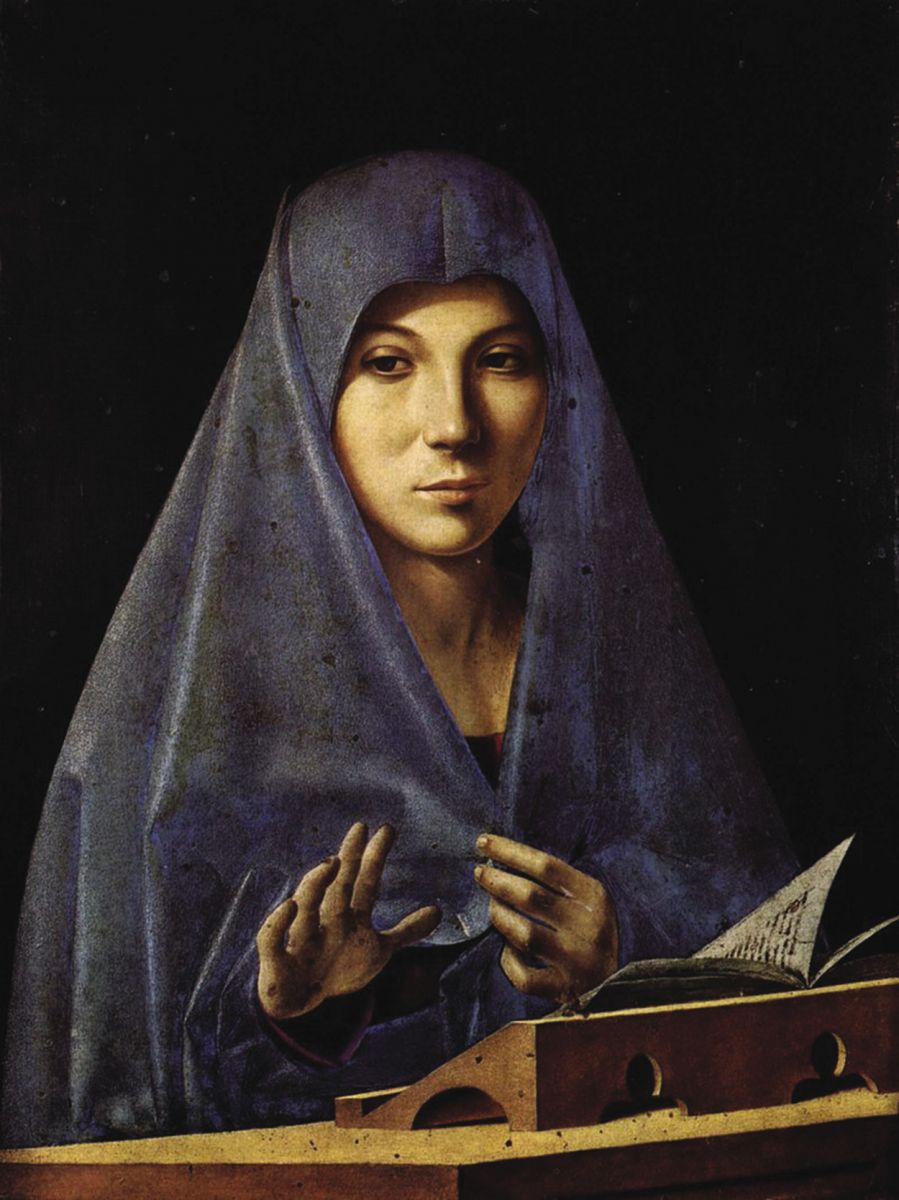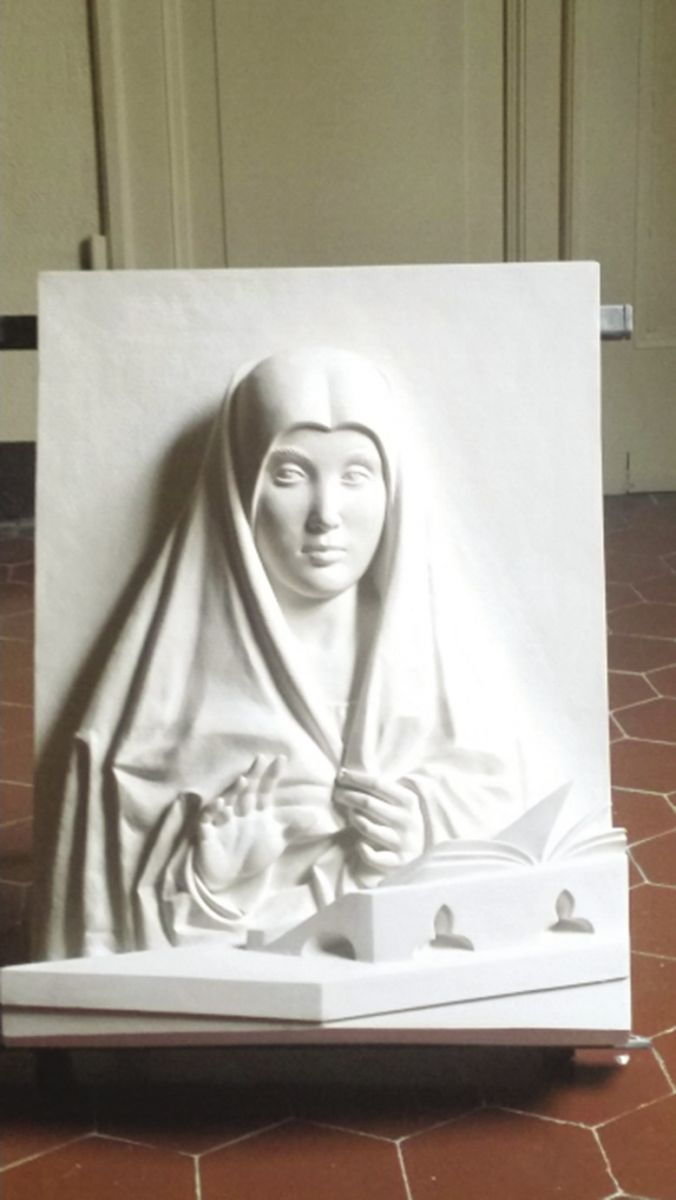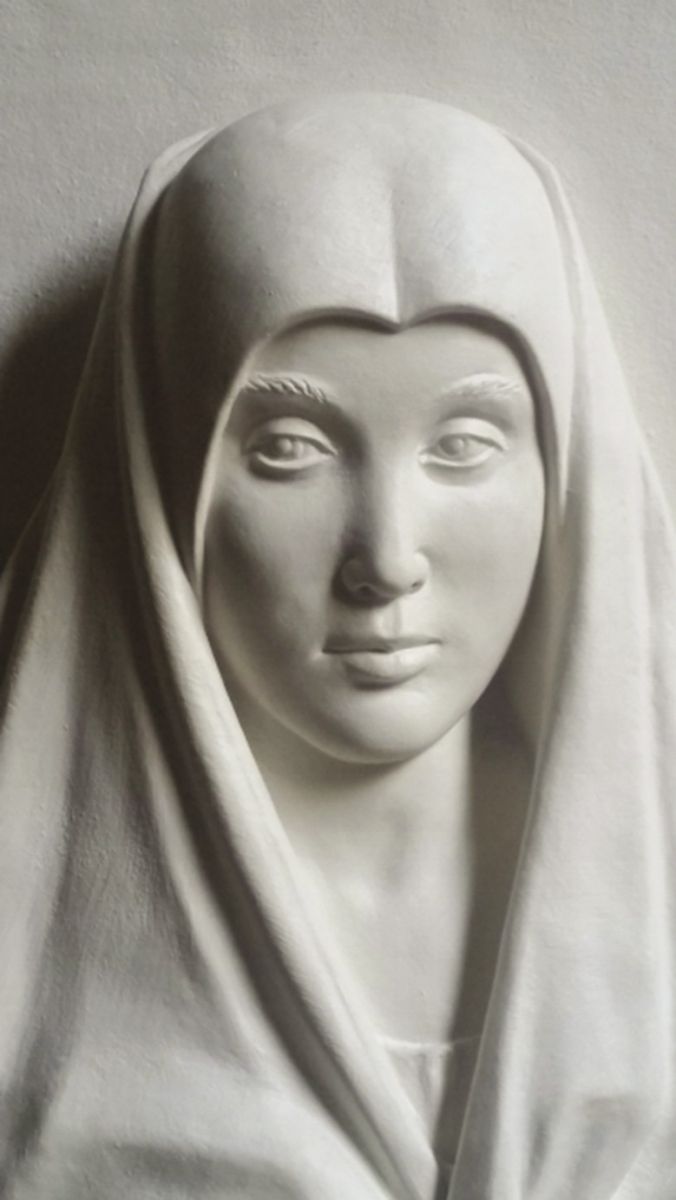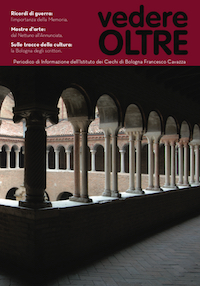The tactile museum Anteros is now making it possible to see and touch the plastic representation of Antonello da Messina's Virgin Annunciate, a perspective in bas relief designed and created by sculptor Marco Marchesini for the Regional Gallery in Palermo's Palazzo Abatellis. This typhlo-didactic instrument is designed for people who live with vision loss. Antonello da Messina, nickname of Antonio di Giovanni de Antonio, was among the most important Italian painters and the main Sicilian painter of the fifteenth century. He reached the difficult balance of combining light, atmosphere and attention to detail - qualities typical of Flemish painting - with the grandeur and rational composition of the Italian school inspired by the classical tradition. His portraits are famous for their vitality and psychological depth.

His Virgin Annunciate is an iconographic variant of the Annunciation, the observer sensing the presence of the Archangel Gabriel without actually seeing him. Mary's posture in this unattainable example of a Marian subject reveals the moment when the Virgin receives the announcement and responds to it with a gesture of the right hand, alluding to awareness as well as surprise. The work of art is a masterpiece endowed with the composition of a solid geometric structure that has been preserved in the plastic translation of the painting. In the foreground, the lectern on which the open book rests, the bold prospective glimpse of the space occupied by the Virgin is preserved, represented here with the face of a girl framed by a cloak modestly covering her head and shoulders. The olive complexion and refined features give the young woman an almost enigmatic purity. The eyes are dark and deep, the posture is slightly turned down and veiled by an imperceptible hesitation, perhaps some uncertainty or shyness. The delicate and thin lips are softly tightened. From this image, an almost incarnate icon, emerges Mary's sober composure. The Virgin is only apparently alone. In reality, Antonello places us in a position to perceive the presence of the Archangel Gabriel, who came to her to announce the birth of Jesus. Being outside the composition, he is in the same position as is the observer. Maria is taken by surprise: the right hand, depicted with impeccable perspective, appears stretched forward, suspended, and seems almost to stop the Archangel's message. With a slight movement of her hand, Maria seems to be silently asking not to go any further, and at the same time she seems to already be wondering what God's messenger will tell her. Antonello da Messina succeeds in translating this complex state of mind into a simple gesture. Unassuming surprise but also inquisitiveness seem to veil the expression of the Virgin. The modesty referred to in artistic literature is revealed above all by the act of the left hand which conceals the limbs underneath the veil (or maphorion, the mantle that Mary uses to cover her shoulders and head). Despite the swift movement, the Virgin does not falter, indeed, her elegance remains unchanged.

The veil covering the neck of the Virgin, caught here in a slight twist, partly reveals her chest, making it possible to perceive intensity between her veil and dress. Antonello subjects the whole work to an evident but strict geometric order: the face is inscribed in an oval, the mantle forms a triangle, the opening of the mantle on the face in turn forms an inverted triangle, the folds fall perpendicularly.

This is a painting full of life: because we are in the initial stages of an encounter, because we are about to establish a dialogue, because the movements of the Virgin are introversive but at the same time expressive. It seems there is even a thin breath of air moving the pages of the book on the lectern: a sign of the arrival of the Archangel moving the air around him. The lectern outlined with precision reminiscent of Flemish paintings and showing wormholes on the surface of the wood, becomes a scenic element that stands between the observer and Mary, but even more so, between Mary and the Archangel Gabriel with whom the observer identifies himself.
A note about the colour: the touch of red on the tunic underneath the mantle gives further life to the blue of the mantle. It is vermilion red, similar to the arterial blood, the blue turning to marine green has a very particular shade that some art historians have compared to the colour of the Sicilian Sea.
What is left is to see it with your hands and caress it with your eyes.





.png)